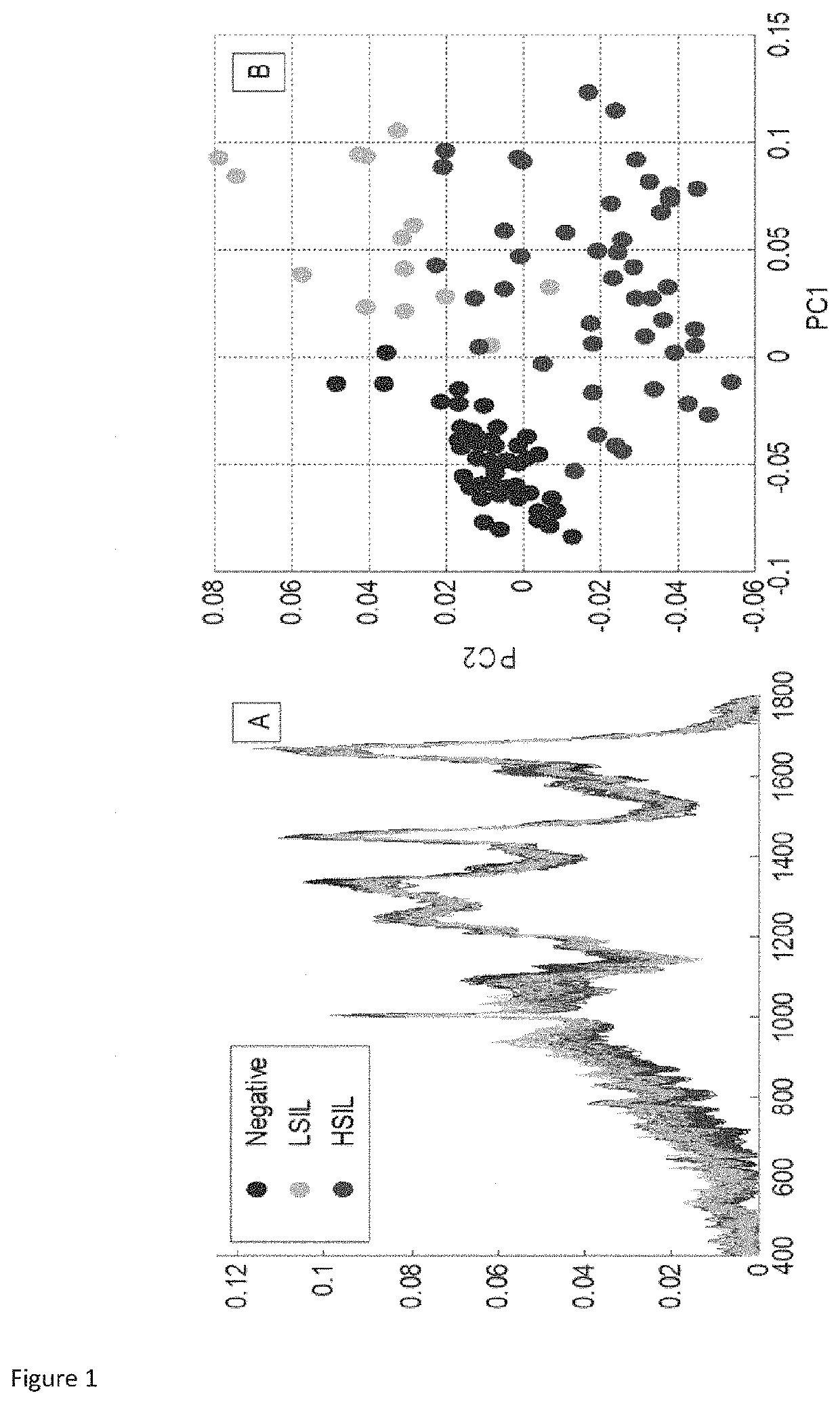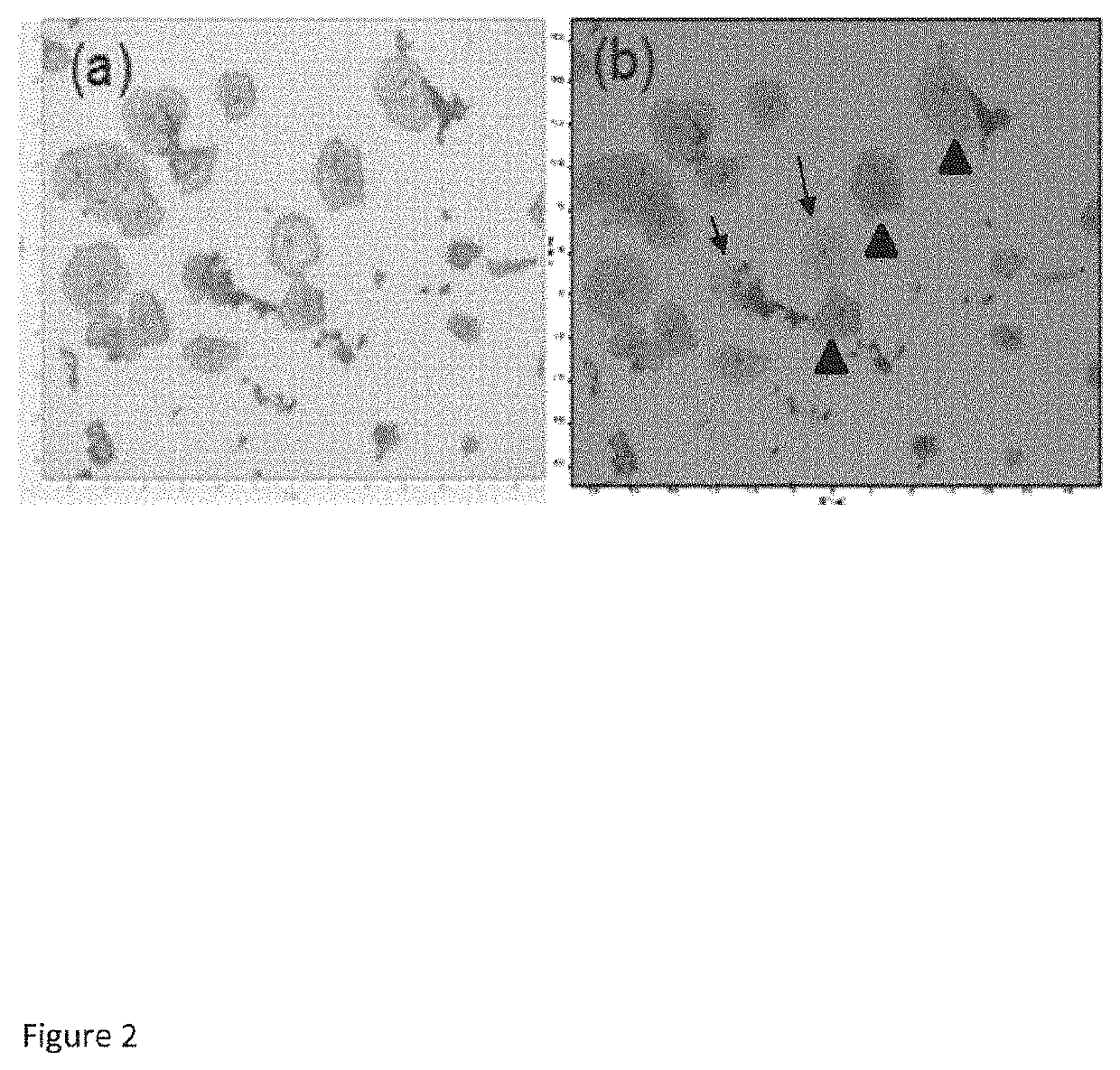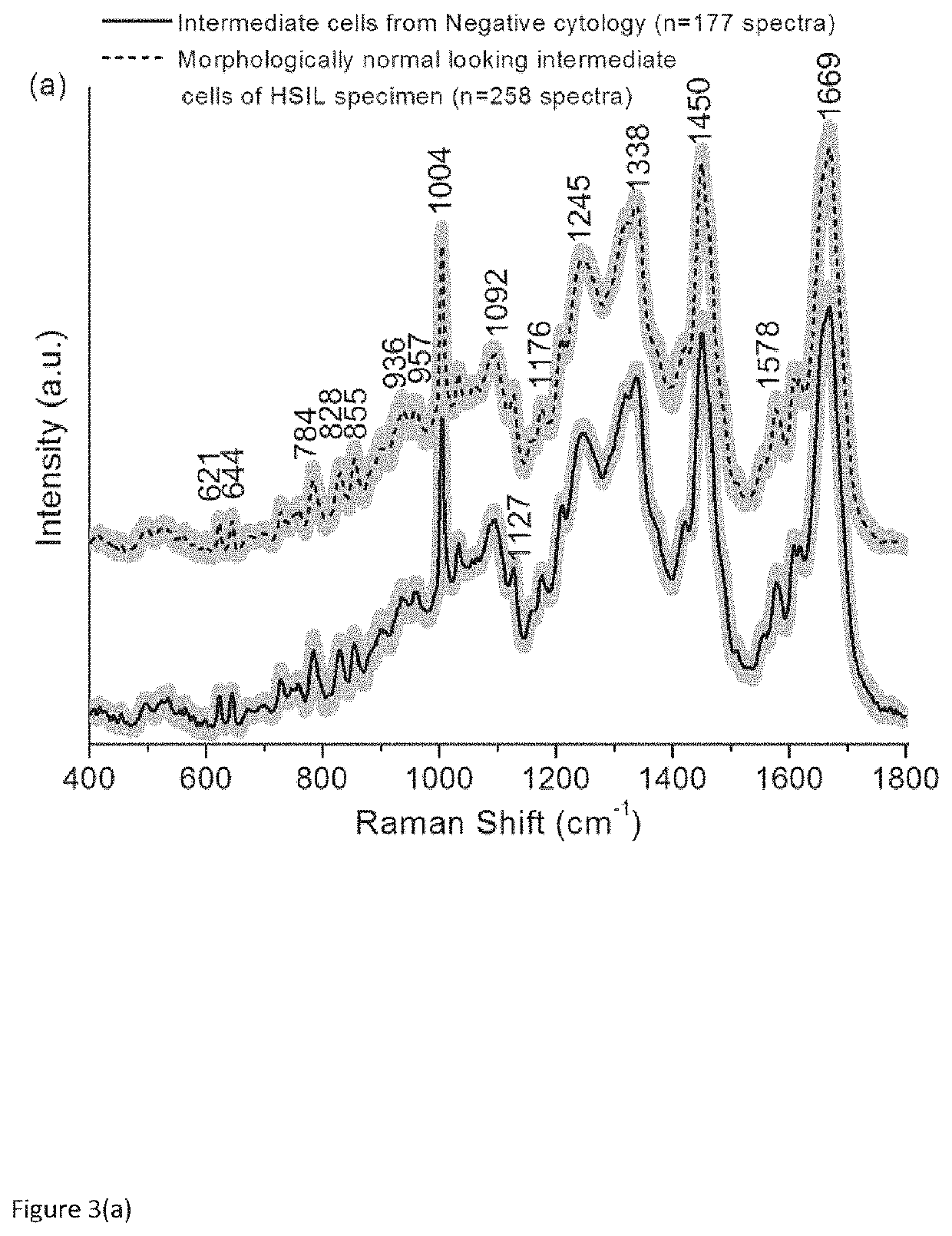A method for identification of low grade cervical cytology cases likely to progress to high grade/cancer
a cytology case and high-grade technology, applied in the direction of material excitation, optical radiation measurement, instruments, etc., can solve the problems of no current system, no current system, no clinical diagnosis, etc., and achieve high sensitivity and specificity. , the effect of time-consuming
- Summary
- Abstract
- Description
- Claims
- Application Information
AI Technical Summary
Benefits of technology
Problems solved by technology
Method used
Image
Examples
example 1
Use of Superficial or Intermediate Epithelial Cells for Discrimination of Negative and HSIL Cytology Cases
[0076]Materials and Methods
[0077]Sample Collection and Processing
[0078]True negative cervical liquid based cytology samples were obtained from the cytology laboratory, Coombe Women and Infants University Hospital (CWIUH), Dublin, Ireland. HSIL cytology specimens were collected during the routine Pap smear from the Colposcopy clinic, CWIUH, Dublin, Ireland. The collected smears were processed via the ThinPrep® method. This study was approved by the Research Ethics Committee CWIUH. The cells were collected from the cervix using a cyto brush and then rinsed in the specimen vial containing PreservCyt transport medium (ThinPrep® Pap Test; Cytyc Corporation, Boxborough, Mass.). The labelled ThinPrep® sample vial was sent to the cytology laboratory equipped with a ThinPrep® processor. All samples were prepared using a ThinPrep® 2000 processor (Hologic Inc., Marlborough, Mass. 01752). T...
example 2
LSIL-HPV
[0087]Materials and Methods
[0088]Sample Collection
[0089]This current study was approved by the Research Ethics Committee at the Coombe Women and Infants University Hospital (CWIUH), Dublin. A total of 39 cervical liquid based cytology samples (15 true negative (TN) specimens, 12 LSIL specimens and 12 HSIL specimens) were collected for this Raman study. True negative cytology samples were obtained from the cytology laboratory, CWIUH, Dublin, Ireland. The LSIL and HSIL cytology specimens were collected from the Colposcopy clinic, CWIUH, Dublin, Ireland. The collected smears were processed via ThinPrep® method. For ThinPrep®, an adequate sampling of cells was collected from the ectocervix of true negative, LSIL and HSIL patients using the cytobrush. The cytobrush was rinsed in the vial containing PreservCyt transport medium (ThinPrep® Pap Test; Cytyc Corporation, Boxborough, Mass.). The vial was named with the patient name and ID and then sent to the cytology laboratory equippe...
PUM
| Property | Measurement | Unit |
|---|---|---|
| diameter | aaaaa | aaaaa |
| power | aaaaa | aaaaa |
| Raman spectrum | aaaaa | aaaaa |
Abstract
Description
Claims
Application Information
 Login to View More
Login to View More - R&D
- Intellectual Property
- Life Sciences
- Materials
- Tech Scout
- Unparalleled Data Quality
- Higher Quality Content
- 60% Fewer Hallucinations
Browse by: Latest US Patents, China's latest patents, Technical Efficacy Thesaurus, Application Domain, Technology Topic, Popular Technical Reports.
© 2025 PatSnap. All rights reserved.Legal|Privacy policy|Modern Slavery Act Transparency Statement|Sitemap|About US| Contact US: help@patsnap.com



